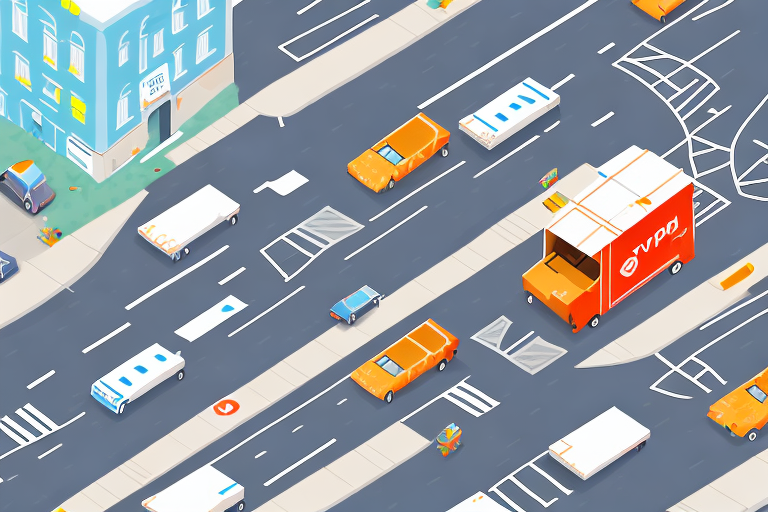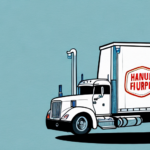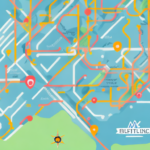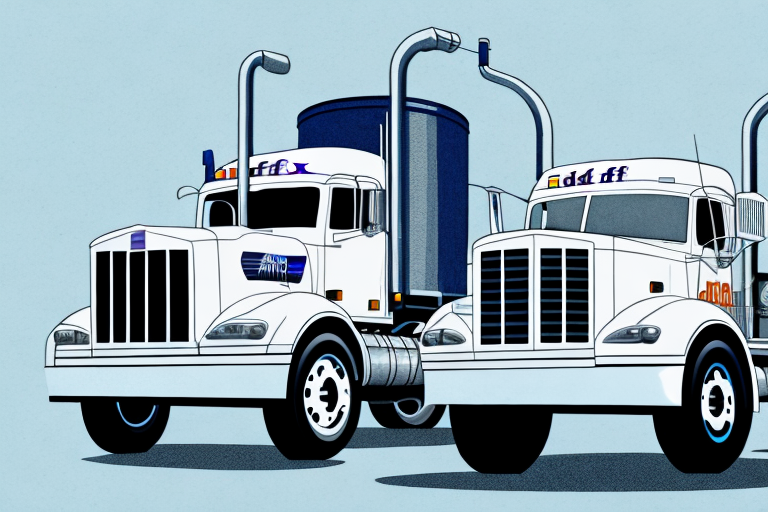The Importance of Efficient Food Delivery Routes
Efficient food delivery routing is a cornerstone of success in the competitive food delivery industry. By optimizing routes, businesses can significantly reduce delivery times, enhance customer satisfaction, and increase profitability. A strategic delivery plan not only maximizes productivity but also streamlines operations, leading to increased revenue while minimizing operational costs.
One notable advantage of efficient routing is the reduction of carbon emissions. Optimized routes allow delivery vehicles to cover shorter distances, thereby lowering fuel consumption and greenhouse gas emissions. According to the Environmental Protection Agency (EPA), transportation accounts for a significant portion of carbon emissions, and optimizing delivery routes can contribute to environmental sustainability. Additionally, efficient routing minimizes the risk of food spoilage during transit, ensuring customers receive fresh and high-quality products.
The Benefits of Optimizing Your Delivery Route
Optimizing your food delivery route offers numerous benefits that can transform your business operations:
- Reduced Delivery Time and Increased Driver Productivity: Streamlined routes allow drivers to complete more deliveries in less time.
- Enhanced Customer Satisfaction: Timely deliveries lead to happier customers and repeat business.
- Minimized Fuel Consumption and Reduced Costs: Efficient routes lower fuel expenses and operational costs.
- Improved Delivery Time Accuracy: Accurate estimates increase reliability and profitability.
Furthermore, optimizing delivery routes contributes to a smaller carbon footprint. By planning the most efficient paths, businesses can reduce the total distance traveled and fuel used, which directly decreases carbon emissions. This not only supports environmental conservation but also enhances your brand's reputation among eco-conscious consumers.
Using Technology to Optimize Your Food Delivery Route
The integration of technology in delivery operations has revolutionized route optimization. Advanced tools such as GPS tracking and route optimization software enable businesses to enhance efficiency, save time, and cut costs. Selecting the right technology that aligns with your business needs and budget is crucial for optimal results.
Real-Time Tracking: Real-time tracking systems allow businesses to monitor their delivery vehicles and drivers continuously. This capability enables dynamic route adjustments in response to traffic congestion, road closures, or other unforeseen delays, ensuring timely deliveries and improved customer satisfaction.
Route Optimization Software: These software solutions analyze various factors such as traffic patterns, delivery windows, and driver availability to determine the most efficient routes. According to a study by McKinsey & Company, businesses that implement route optimization software can achieve up to a 20% reduction in delivery costs.
Tips for Determining the Best Delivery Route for Your Business
Choosing the optimal delivery route involves considering multiple factors to ensure efficiency and customer satisfaction:
- Analyze Traffic Patterns: Understand peak traffic times and congestion hotspots to avoid delays.
- Consider Delivery Windows: Align routes with customer availability and preferences.
- Evaluate Driver Capacity: Optimize routes based on driver availability and the number of deliveries per trip.
- Minimize Distance Between Stops: Reduce travel distance to save time and fuel.
Additionally, the nature of the goods being delivered plays a crucial role. For perishable items, choosing routes that ensure swift delivery is essential to maintain freshness. For fragile items, selecting smoother roads to avoid bumps and vibrations can prevent damage. These considerations help in selecting routes that meet both business needs and customer expectations.
How to Reduce Delivery Time and Improve Customer Satisfaction
Reducing delivery time while enhancing customer satisfaction is vital for success in the food delivery industry. Implementing the following strategies can help achieve these goals:
- Advance Route Planning: Pre-plan routes to minimize wait times and ensure timely deliveries.
- Invest in GPS Tracking: Monitor driver locations to make real-time adjustments and avoid delays.
- Incentivize Timely Deliveries: Offer bonuses or rewards to drivers who consistently deliver on time.
- Provide Real-Time Updates: Use technology to keep customers informed about their order status, enhancing transparency and trust.
Streamlining the order processing system is another effective method. Implementing efficient order management software can automate tasks such as order taking, dispatching, and tracking. Automation reduces processing time, allowing for faster dispatch of drivers and quicker deliveries, ultimately leading to higher customer satisfaction.
The Role of Traffic Patterns in Delivery Route Optimization
Understanding and analyzing traffic patterns is critical for effective delivery route optimization. Traffic congestion and unpredictable delays can significantly impact delivery times. By incorporating traffic data into route planning, businesses can avoid congested areas and select routes that ensure timely deliveries.
Utilizing Real-Time Traffic Data: Technologies like GPS and real-time traffic monitoring provide up-to-date information on current traffic conditions. This data allows for dynamic route adjustments, helping drivers circumvent delays and maintain efficient delivery schedules.
Leveraging Historical Traffic Data: Analyzing historical traffic trends enables businesses to predict and plan for recurring traffic conditions, such as rush hours or seasonal congestion, enhancing long-term route planning strategies.
Additionally, considering the type of delivery vehicle is important. Larger vehicles may require different routes compared to smaller ones due to size and maneuverability constraints. By tailoring routes to the specific capabilities of the delivery fleet, businesses can further enhance efficiency and reduce the likelihood of delays.
Maximizing Profitability Through Efficient Delivery Routing
Efficient delivery routing is essential for maximizing profitability in the food delivery sector. By reducing operational costs and enhancing service efficiency, businesses can significantly boost their bottom line. Here are key strategies to maximize profitability:
- Minimize Fuel Consumption: Optimize routes to reduce mileage and fuel usage.
- Lower Maintenance Costs: Efficient routing reduces wear and tear on vehicles, lowering maintenance expenses.
- Invest in Advanced Technology: Implementing route optimization software and other technologies can streamline operations and reduce costs.
- Promote Repeat Business: Offer promotions and discounts to encourage customer loyalty and repeat orders.
Exploring alternative transportation methods can also contribute to profitability. For instance, using bicycles for deliveries in bike-friendly areas can decrease fuel costs and appeal to environmentally conscious customers. Additionally, regularly reviewing delivery data helps businesses identify inefficiencies and areas for improvement, ensuring continuous optimization and profitability.
The Impact of Weather on Food Delivery Routes
Weather conditions play a significant role in food delivery operations. Adverse weather such as rain, snow, and ice can create hazardous driving conditions, leading to delays and increased risk of accidents. To mitigate these risks, businesses should adjust their routes to avoid particularly affected areas and ensure driver safety.
Preparing for Extreme Weather: Equip delivery vehicles with necessary gear, such as snow tires or insulated storage for hot weather, and provide drivers with training to handle challenging conditions effectively.
Adapting to Weather-Driven Demand: Weather can influence customer ordering patterns. For example, cold weather may increase demand for hot beverages and soups, while warm weather might boost sales of cold drinks and ice cream. Understanding these trends helps in planning routes and inventory to meet fluctuating demands.
Additionally, having contingency plans in place for unexpected weather changes ensures that deliveries remain timely and safe, maintaining customer satisfaction even in adverse conditions.
Ways to Minimize Fuel Costs and Reduce Carbon Footprint
Minimizing fuel costs and reducing the carbon footprint are essential for sustaining a profitable and environmentally responsible food delivery business. Implementing the following strategies can help achieve these objectives:
- Invest in Fuel-Efficient Vehicles: Utilizing vehicles that consume less fuel can significantly lower operational costs.
- Optimize Routes: Efficient routing reduces the total distance traveled, thereby cutting fuel consumption.
- Adopt Eco-Friendly Practices: Use recyclable packaging materials and promote waste reduction through recycling and composting initiatives.
Encouraging customers to choose sustainable delivery options also plays a vital role. Offering delivery during off-peak hours can decrease traffic congestion and emissions, while incentivizing the use of bike delivery or consolidated group deliveries can further reduce the environmental impact.
Partnering with local suppliers is another effective strategy. Sourcing ingredients locally not only supports the local economy but also diminishes the carbon footprint associated with transporting goods over long distances. Moreover, local sourcing ensures fresher ingredients, enhancing the quality of the delivered food.
The Relationship Between Driver Safety and Delivery Efficiency
Driver safety directly influences delivery efficiency. Safe and secure drivers are more likely to perform their duties effectively and complete deliveries on time. Investing in comprehensive safety training and equipping drivers with the necessary safety gear fosters a secure working environment.
Safety Training: Providing drivers with training on defensive driving techniques, accident prevention, and safe handling of deliveries reduces the likelihood of accidents and delays.
Safety Equipment: Ensuring that vehicles are equipped with safety features such as airbags, anti-lock brakes, and proper lighting enhances driver safety and reliability.
Moreover, fostering a culture of safety can lead to higher driver satisfaction and retention, contributing to a more efficient and stable delivery workforce.
Strategies for Overcoming Common Challenges in Food Delivery Routing
Food delivery routing presents several challenges, including traffic delays, weather disruptions, and operational inefficiencies. Implementing the following strategies can help overcome these obstacles:
- Leverage Advanced Technology: Utilize route optimization software and real-time tracking to manage routes more effectively.
- Anticipate Traffic and Weather Patterns: Use predictive analytics to foresee and plan for potential delays caused by traffic congestion or adverse weather.
- Enhance Communication: Maintain regular communication with drivers to provide updates and receive feedback on route conditions.
- Provide Ongoing Training: Continuously train drivers to improve their performance and adaptability to changing conditions.
Regular monitoring and assessment of delivery performance metrics allow businesses to identify and address inefficiencies promptly, ensuring consistent and reliable delivery services.
How to Monitor and Improve Your Delivery Performance Over Time
Continuous monitoring and improvement of delivery performance are essential for sustained success in the food delivery industry. By tracking key performance metrics, businesses can identify strengths and areas for improvement:
- Delivery Time: Measure the average time taken to complete deliveries and identify factors causing delays.
- Customer Satisfaction: Gather customer feedback and monitor ratings to ensure high levels of satisfaction.
- Driver Performance: Assess driver efficiency, adherence to routes, and overall performance to maintain a reliable delivery workforce.
- Fuel Consumption and Costs: Track fuel usage to identify opportunities for cost reduction and efficiency improvements.
Implementing a robust monitoring system enables businesses to make data-driven decisions, refine their delivery strategies, and ensure continuous improvement in delivery operations.
The Future of Food Delivery Routing: Trends and Innovations
The food delivery industry is rapidly evolving, with emerging trends and innovations shaping its future. Staying abreast of these developments is crucial for maintaining a competitive edge:
- Autonomous Vehicles: The use of self-driving vehicles promises to revolutionize delivery logistics by reducing labor costs and increasing efficiency.
- Drones: Drone delivery offers a faster alternative for short-distance deliveries, particularly in urban areas.
- Artificial Intelligence and Machine Learning: AI-driven algorithms enhance route optimization by predicting traffic patterns and customer demand.
- Contactless Deliveries: In response to consumer preferences for safety and convenience, contactless delivery options are becoming increasingly popular.
Embracing these innovations can help food delivery businesses enhance their operations, improve customer experience, and stay ahead of the competition.
Case Studies: Successful Examples of Optimized Food Delivery Routes
Examining successful case studies provides valuable insights into effective food delivery routing strategies:
- Pizza Hut: Utilizes GPS and real-time tracking technology to optimize delivery routes, ensuring timely deliveries and high customer satisfaction.
- Domino's: Leverages customer data to enhance route planning and reduce delivery times, resulting in improved efficiency and profitability.
- Uber Eats: Employs artificial intelligence and machine learning to dynamically optimize routes and delivery schedules for its drivers.
These examples demonstrate the impact of technology and data-driven strategies on enhancing delivery efficiency and customer satisfaction.
Conclusion
Optimizing your food delivery route is indispensable for achieving long-term success in the competitive food delivery market. By implementing best practices such as leveraging technology, understanding traffic and weather patterns, and continuously monitoring performance metrics, businesses can streamline operations, reduce costs, and increase profitability. Staying informed about emerging trends and learning from successful case studies further empowers businesses to adapt and thrive. With a well-planned and optimized delivery strategy, your food delivery business can not only meet but exceed customer expectations, ensuring sustained growth and profitability.




















